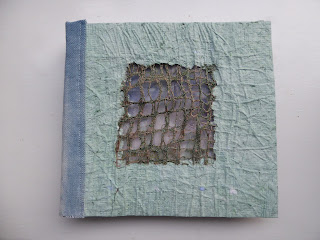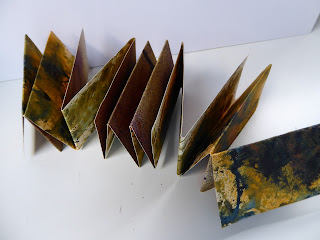Authentication
Health and safety:
·
Take normal levels of care whilst using
electrical equipment i.e. don't leave electrical cables trailing across floor
or work space.
·
Equipment for dyeing and paper-making should be
kept separate from general kitchen equipment to avoid contamination of
foodstuffs.
·
Clean up any spillages immediately and do not
allow water to come into contact with electrical appliances.
·
Wash all equipment thoroughly after use to
ensure they are clean and ready for action next time you come to use them.
·
When bonding fabrics ensure that baking
parchment is used beneath and on top of the fabrics being bonded to prevent
damage to your iron.
·
Work in a well-ventilated space with water close
at hand when using candles/matches and other heat tools.
·
Work on a heat-resistant surface when using heat
tools.
·
Use the correct heat for the fabric being used
when using an iron, and keep fingers out of the way – especially when using
steam.
·
Cover all surfaces with plastic sheeting as well
as newspaper when using Brusho inks, dyes and other paints.
·
Use a cutting mat when using a craft knife to
cut papers, together with a non-slip ruler. Replace the blade regularly to
ensure a clean cut and always put the cap back when it is not in use.
·
Use a darning foot and embroidery hoop when
doing free machine embroidery to protect your fingers and change the needle regularly.
·
Always, always keep pins, needles and other
sharp items away from pets and young children.
Storage of materials:
Design work in progress: kept tidily in workspace away from sun, dust and moisture. Embroidery in progress is kept in a pocket/folder together with the relevant threads and needles.
Completed embroidery: Placed in sketchbook or display folder.
Completed design work: Placed in sketchbook
Inks and paints: upright in the allocated drawer in my garage workroom.
Other items - glue, bleach etc: Upright in wall cupboard in garage workroom out of reach of pets and children.
Fabrics: Those required for the current project are kept in a basket together with threads and other items so they are to hand when needed.
Sewing machine: Kept on sewing table in my sewing room with its cover in place and wires stored neatly.
Other electrical equipment (Iron, blender etc): Allowed to cool after use then stored on the workbench in my garage workroom.
Costings
Blender ...... £18.99
Linen scrim ..... £3.75
Other fabric and threads from my existing stock ... estimated cost approx £6
Timings
Chapter 1 - 2 hoursCostings
Blender ...... £18.99
Linen scrim ..... £3.75
Other fabric and threads from my existing stock ... estimated cost approx £6
Timings
Chapter 2 - 6 hours
Chapter 3 - 1.5 hours
Chapter 4 - 8 hours
Chapter 5 - 7 hours
Chapter 6 - 12.5 hours
Chapter 7 and 8 - 8 hours
Chapter 9 - 3 hours
Chapter 10 - 6 hours
Chapter 11 - 14 hours





























































